While doing some research on Pogonomyrmex badius back in mid-late May of last year (I had just found a population and wanted to see if I could find more), I found out about a plant called Florida scrub rosemary (Ceratiola ericoides), and that badius colonies are often abundant in the areas between plants in a type of scrub habitat called a rosemary bald. According to Mark Deyrup in his 2017 publication on the ant species of Florida, "[he has] never seen a rosemary bald that lacked badius." (Deyrup, 2017) Keeping this knowledge in mind, I figured that if I could locate a population of Florida rosemary, I could find another population of badius. So, I turned to my favorite identification and observation app, iNaturalist, to look for nearby records of Florida rosemary, and low-and-behold, there were a lot of observations around 30 minutes from my house at a place called Peachtree Rock Heritage Preserve. The location had large deposits of deep sandy soil, had a large population of longleaf pines, was scrubby in most regions, and was frequently burnt. All the signs pointed to it being prime habitat for badius. As I did more research on the preserve, I found out that it, along with the McEntire Air National Guard Base, are among the last remaining places in South Carolina where the native Solenopsis geminata can be found. (Davis, 2009) This excited me, as I had thought geminata had been all but exterminated from the state by the ever-present S. invicta. This gave me a slim beacon of hope that maybe our native fire ants were still holding on in select locations. However, due to my moving to Prosperity, which put the destination time up to an hour, and my lack of time to go there, I was unable to visit this unique location until just a few days ago.
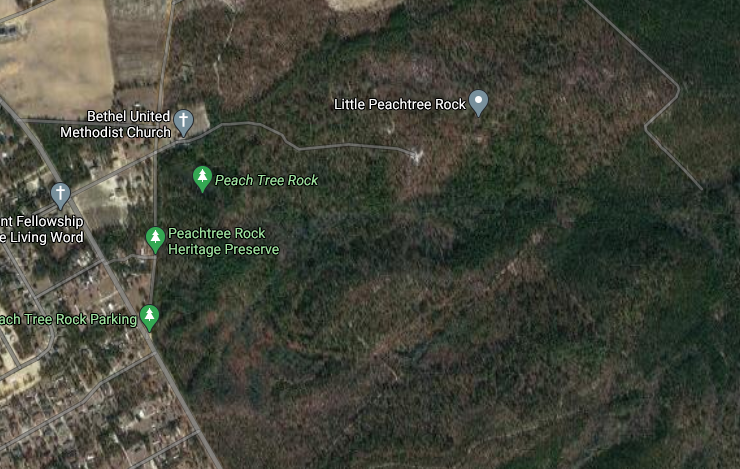
I had planned to go on the 27th of February, but my truck broke down and I had no reliable means of getting there with enough time to do enough adequate sampling. The 28th I had already made plans to hang out with a friend. March 6th and 7th were too cold for much to be active, so I settled on the 12th, a Friday I did not have school and when it would be very warm. On top of that, Peachtree Rock is a heavily used trail due to its main attraction (consequently), Peachtree Rock, which unfortunately collapsed in 2013. However, Little Peachtree Rock is still standing and the only waterfall in the South Carolina coastal plain still flows. Going on a Friday would keep me out of the way of most of the other park visitors. So, the date was set, and now all I had to do was wait.
I arrived early in the morning at 8:45. It was a bit chilly, but I knew it would warm up as the day went on. The high for the day was 80 degrees, so it wouldn't be cool for long. As I entered the 306-acre preserve, I found it a bit difficult to find the main trail, as there were two other apparent trails on either side of the main one. One of them I found was closed and the other led into an impossible thicket of evergreen shrubs. So, after about 15 minutes of confusion, I finally decided to go down the middle path. The first ant species I stumbled across before entering the trail was the fairly common Forelius pruinosus, a small, fast-moving species of open, sunny environments. I was also greeted by Solenopsis invicta, which made me think that the geminata was no longer present on the preserve due to it, once again, being forced out by RIFA. It had been at least 12 years since the last recorded record of geminata in the area, so maybe invicta had forced them out. Due to it still being early in the year, Prenolepis imparis was still out and active all around the preserve.
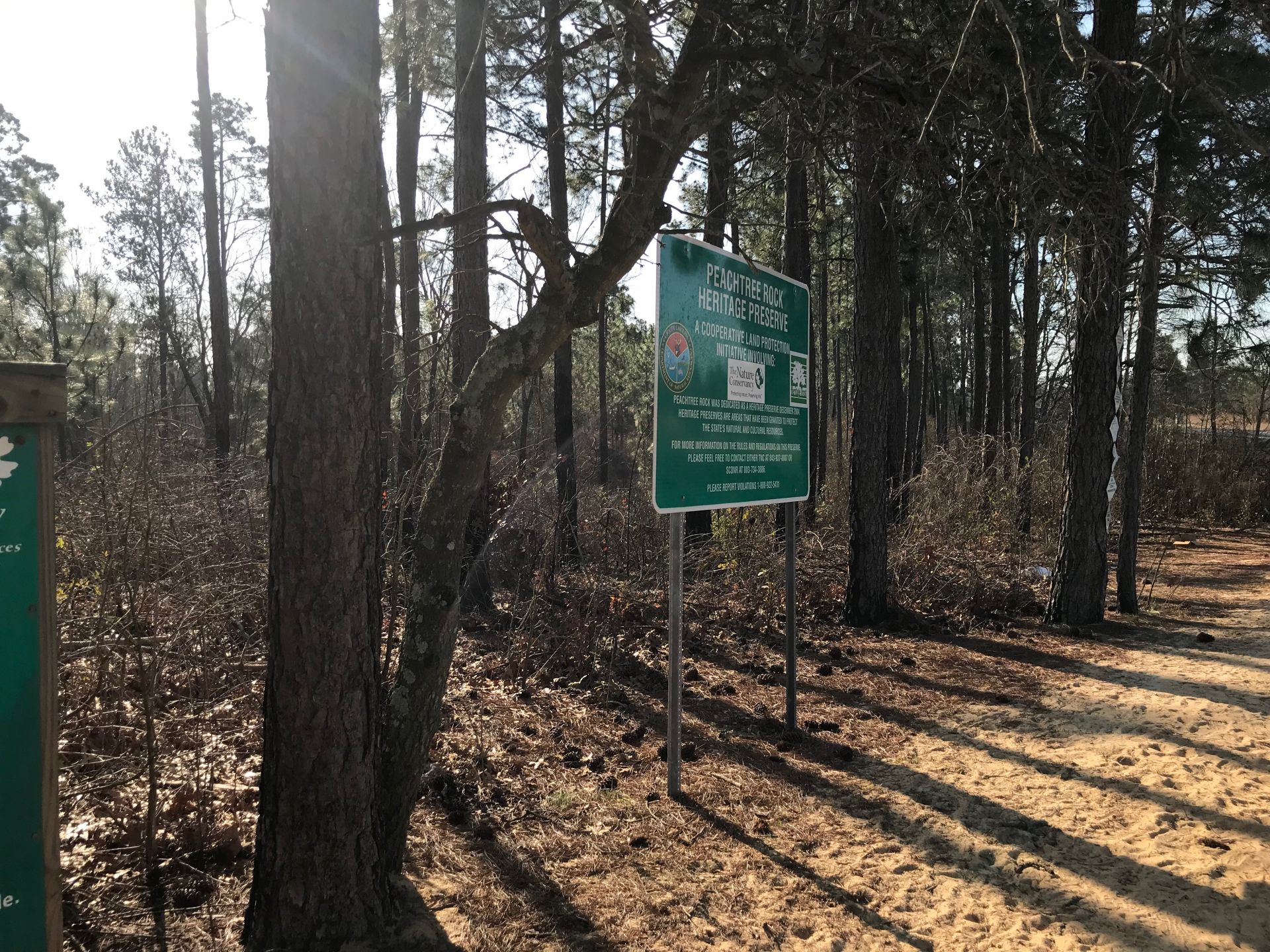
Finally starting down the main trail, I watched the sandy soil gradually become covered by deciduous leaf litter, and I knew that I was descending down into the ravine and towards Peachtree Rock. Alongside the trail, I noticed a couple of mounds. Slightly disturbing the entrances to said mounds revealed its inhabitants, Pheidole morrisii, which appeared to be abundant in this region. As I had only seen populations of this species 1 other time, they were a welcome addition to my specimen collection. Also along the trail were plenty more Prenolepis imparis and a founding colony of Camponotus castaneus which were found under a log. After about a half-mile hike, I made it down to the now fallen Peachtree Rock, which was still impressive in its own right. Nearby was the waterfall, which was a bit bigger than I thought it would be, though it was still pretty small. I considered climbing up to the top to see the creek that feeds the waterfall, but I decided that there'd be time for that later, and I kept on walking.
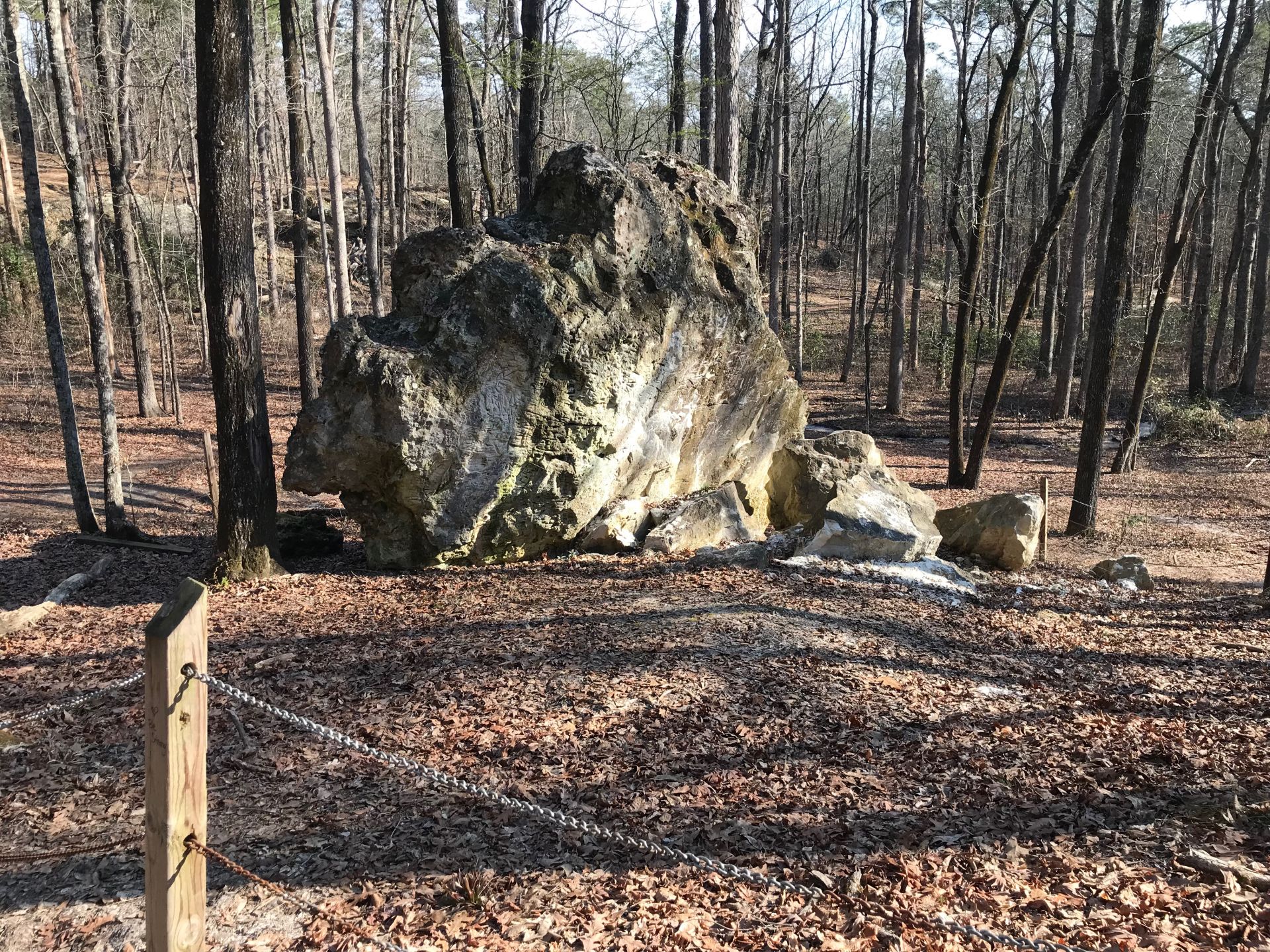
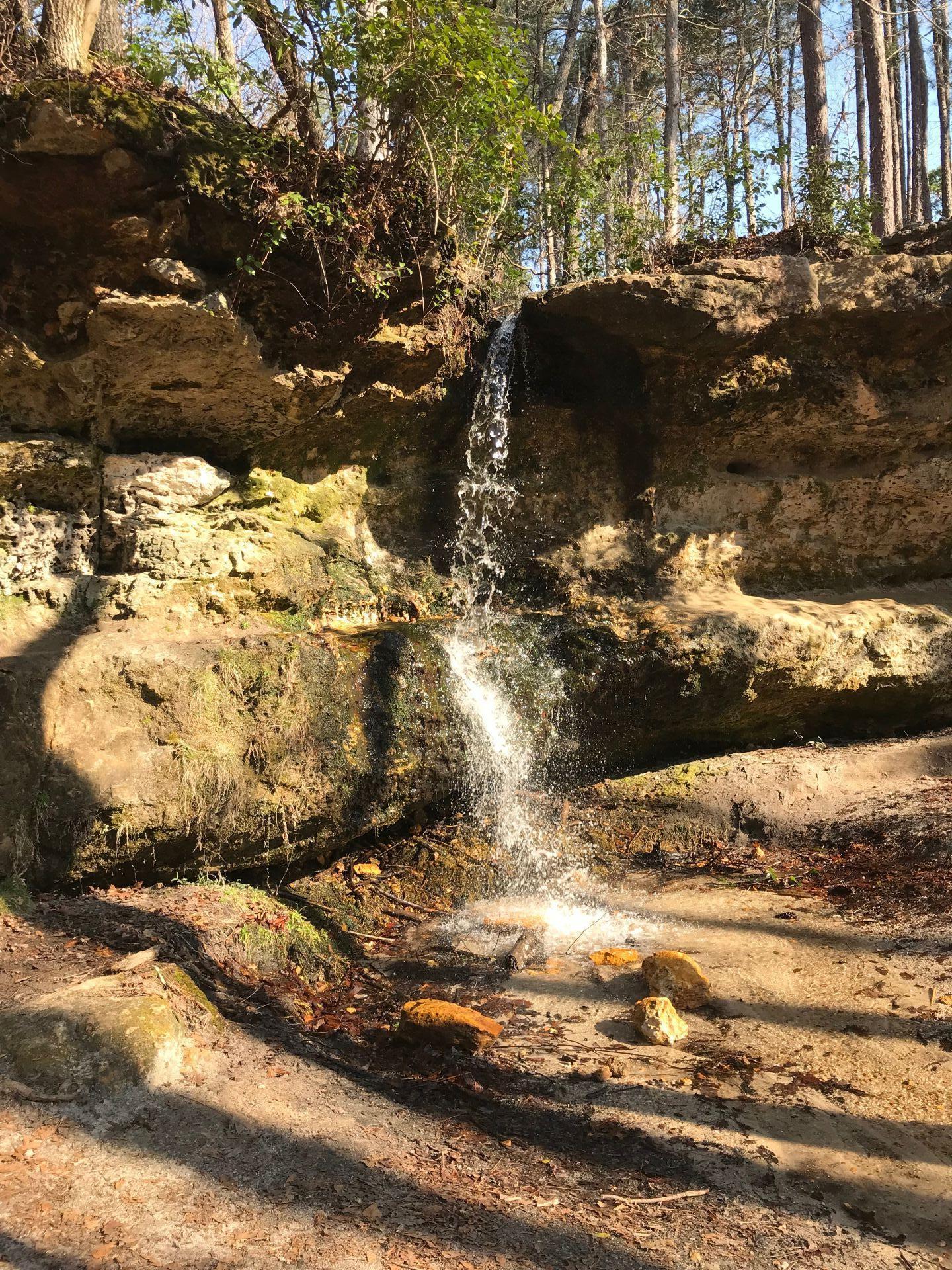
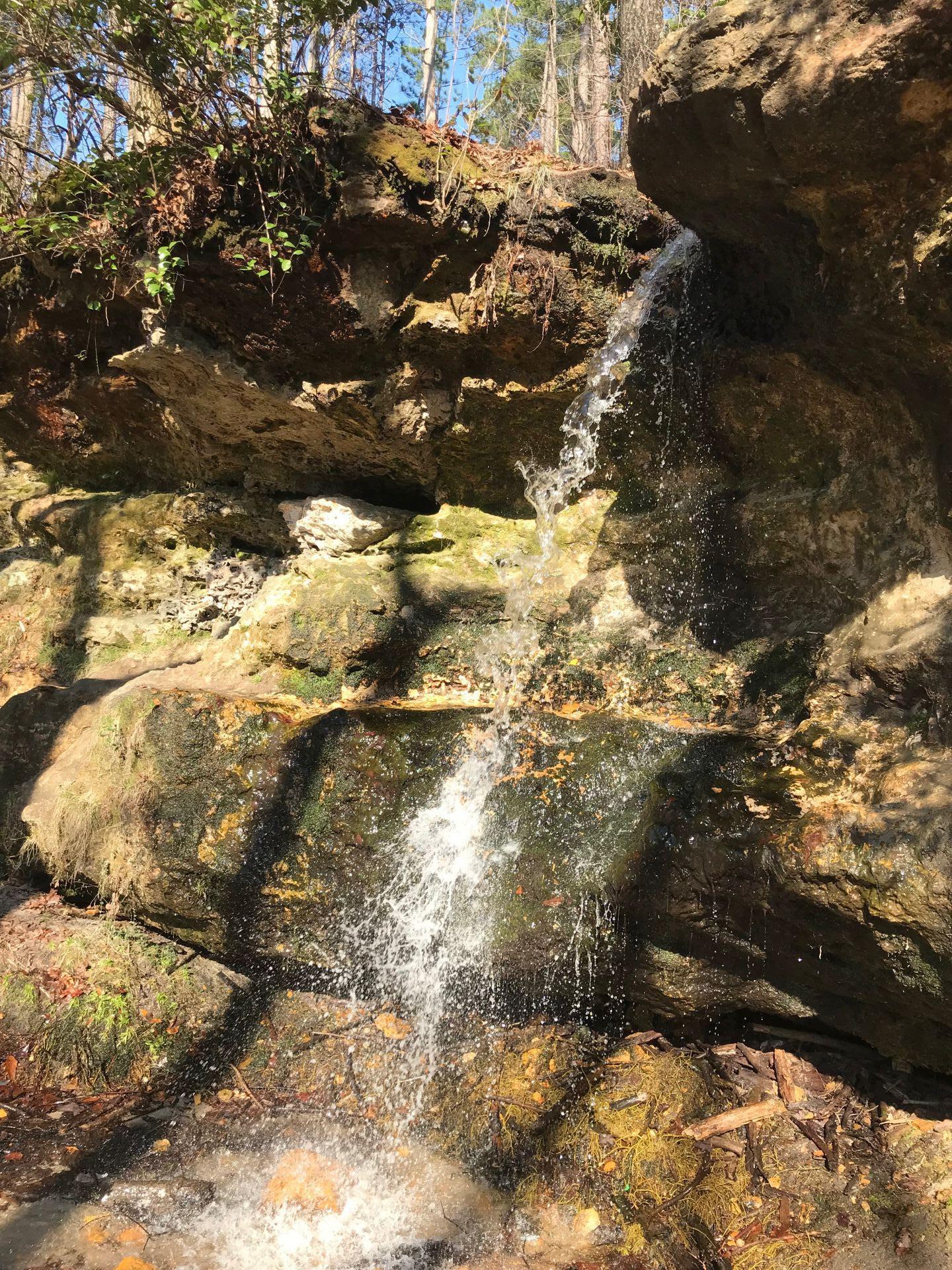
As I came out of the ravine and into the scrubbier regions of the park, I continued to come across colonies of Prenolepis imparis and Pheidole morrisii, but I hadn't really seen any more RIFA, so that was a good sign. I wasn't seeing any geminata either, but I remained hopeful. As I came out of the mesic regions, the vegetation became dominated with longleaf pines and scrubby oaks. I stopped at a patch of open sand with some young longleaf pines springing up around it, but only saw some Dorymyrmex bureni and Prenolepis imparis. Disappointing, but I knew there was a lot more open sand where that came from. I had also yet to see any Florida rosemary, but according to iNaturalist, it would be mostly towards the back of the preserve, so I wasn't too worried. I started to see more Solenopsis, but they were tiny, likely incipient colonies with small, conical mounds, so I didn't really bother with them. Reaching a large white sand flat atop a low hill, I slowed down to take a look around and flip some rocks. The microhabitat was mostly dominated with large colonies of the heat-loving Forelius pruinosus, but under one rock near the base of a large longleaf pine was a massive colony of what I believe to be Pheidole diversipilosa, which I had only collected once before. An awesome sight to behold! A few meters away, I saw a cute little female eastern fence lizard, which I knew was present in the area. I took some photos of her and kept on moving.
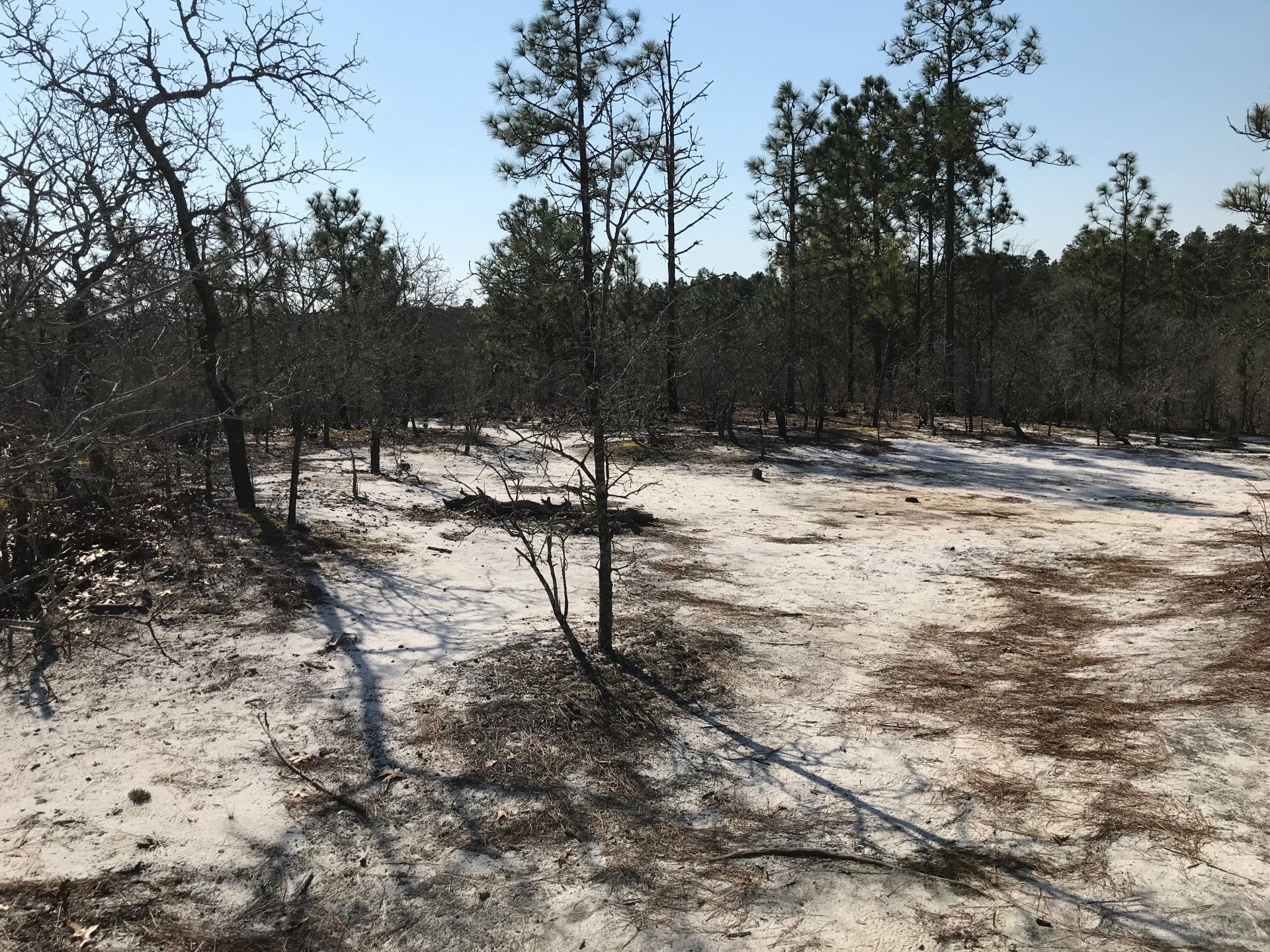
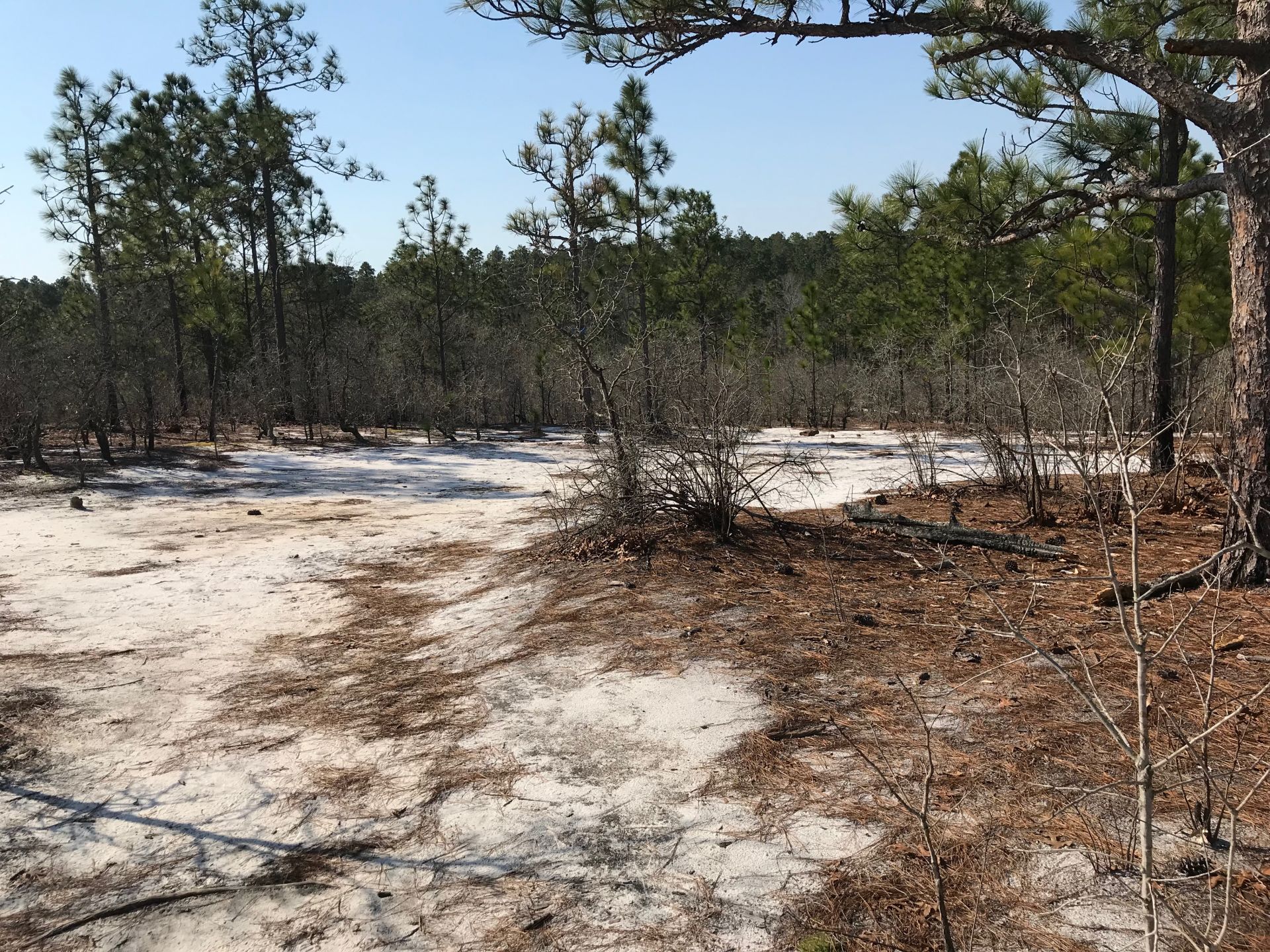

Beautiful female eastern fence lizard
I left the sand flat with the intent to find Little Peachtree Rock. I pulled out my GPS to find where the prominent rock was located and headed down the trail that would take me to it. It didn't take long to find the massive sandstone wall that marked the Atlantic Seaboard Fall Line which was once the coast of the Atlantic Ocean, hence the characteristic sand deposits of the Sandhills and the Coastal Plain. I saw the rock, and started heading towards it. While hiking up to it, I managed to find a male fence lizard with a beautiful blue underside. After letting him go back onto his log, I continued on up to Little Peachtree Rock. It was a lot bigger than I had originally thought. I mean, having "little" in its name seemed to imply the rock was fairly small, and compared to Peachtree Rock it was, but it was still huge. Ascending up the fall line and into the Piedmont, I had entered a longleaf pine savanna, last burnt in 2016. Upon embarking onto the trail, I found a small colony of the notorious Trachymyrmex septentrionalis fungus-farming ant, the first time I had seen the species this season. It was nice to know they were out and active. I continued to look for Solenopsis geminata by flipping over some small rocks and logs, but to no avail. However, I did see a few Crematogaster pinicola workers foraging on the scorched trunk of a longleaf pine, and although I see the species quite frequently, they were still a welcome sight.

The underside of a male eastern fence lizard is a sight to behold
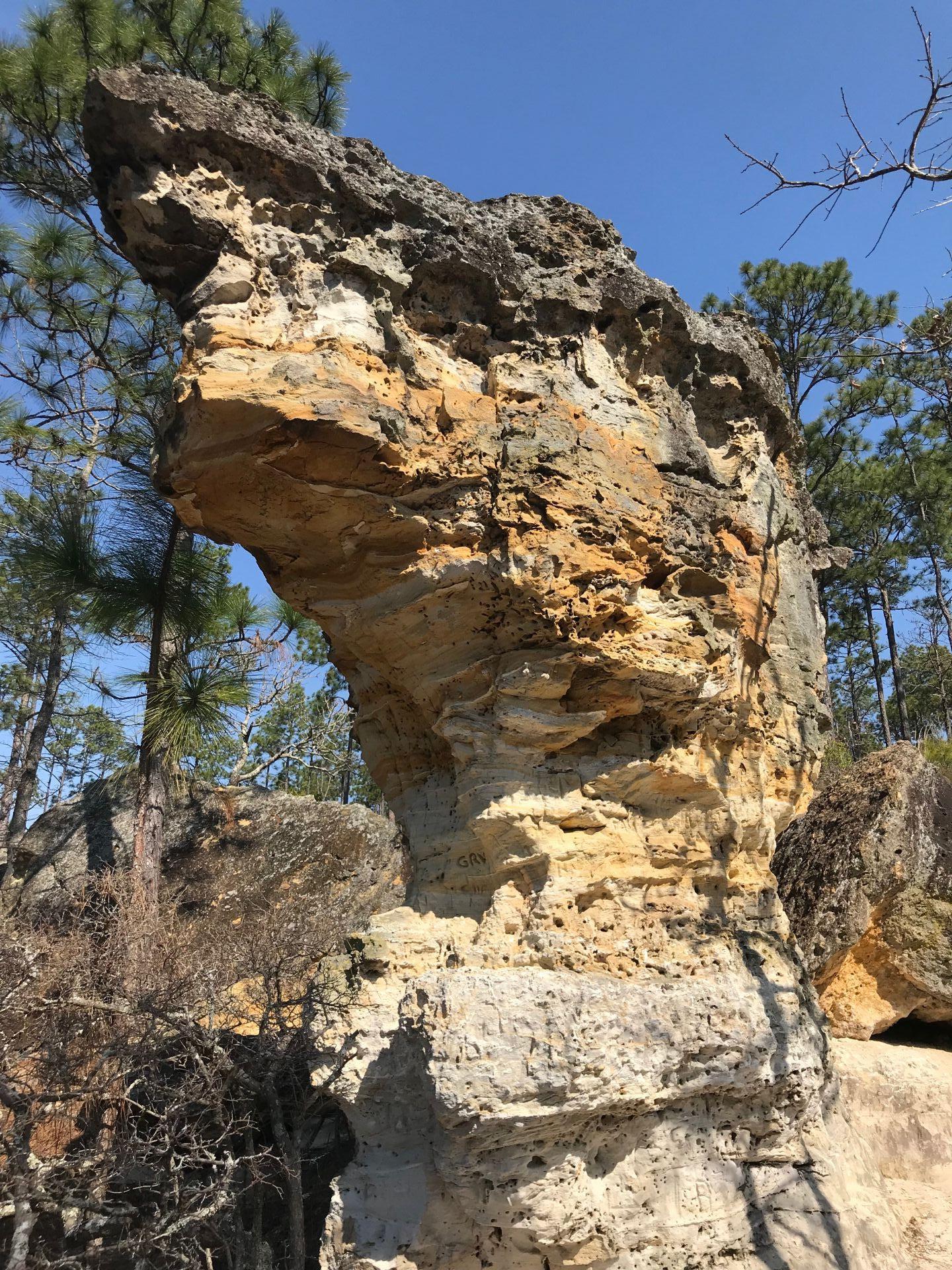
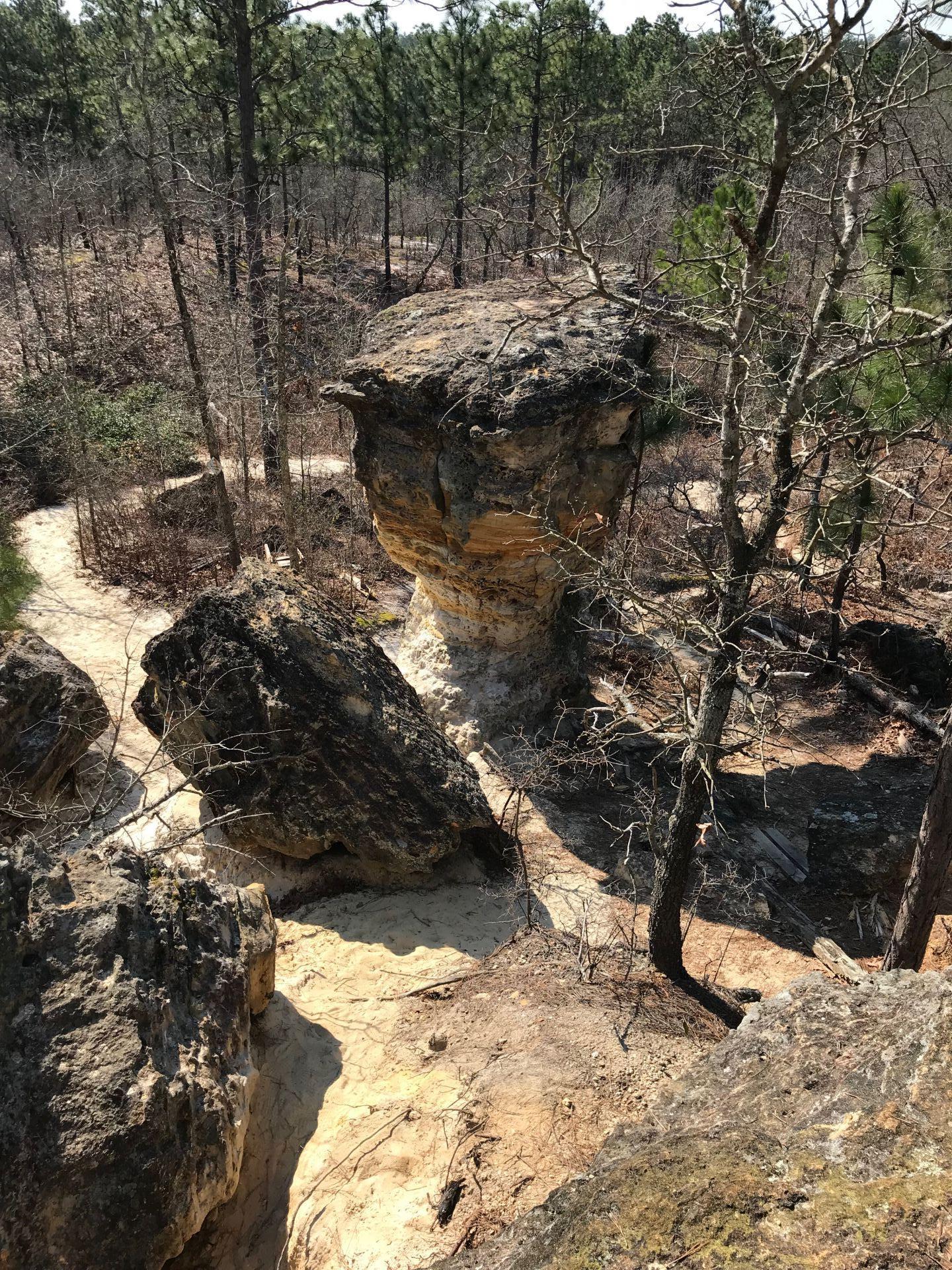
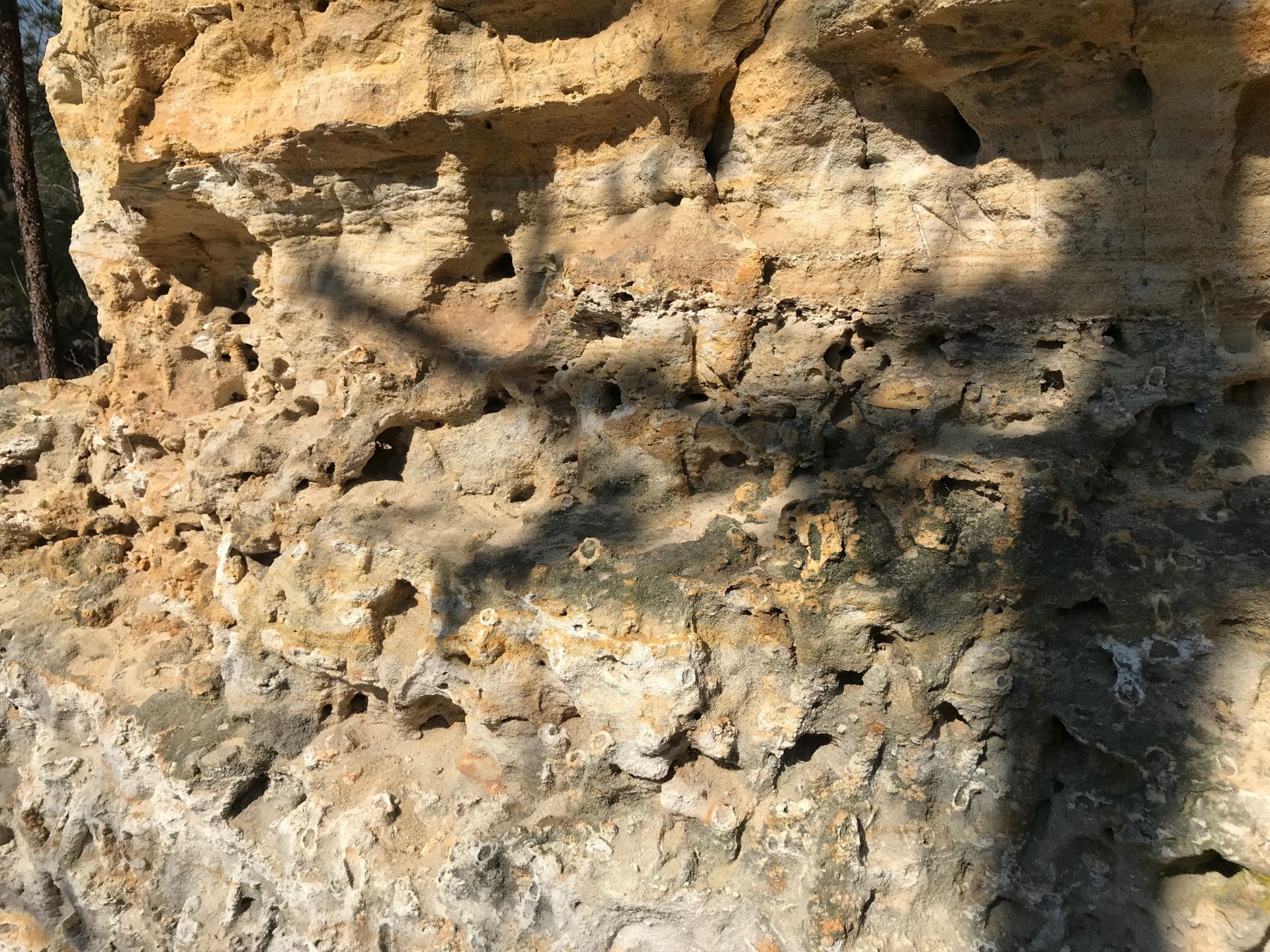
Tunnels and holes on LPTR made by marine organisms when this area was all underwater
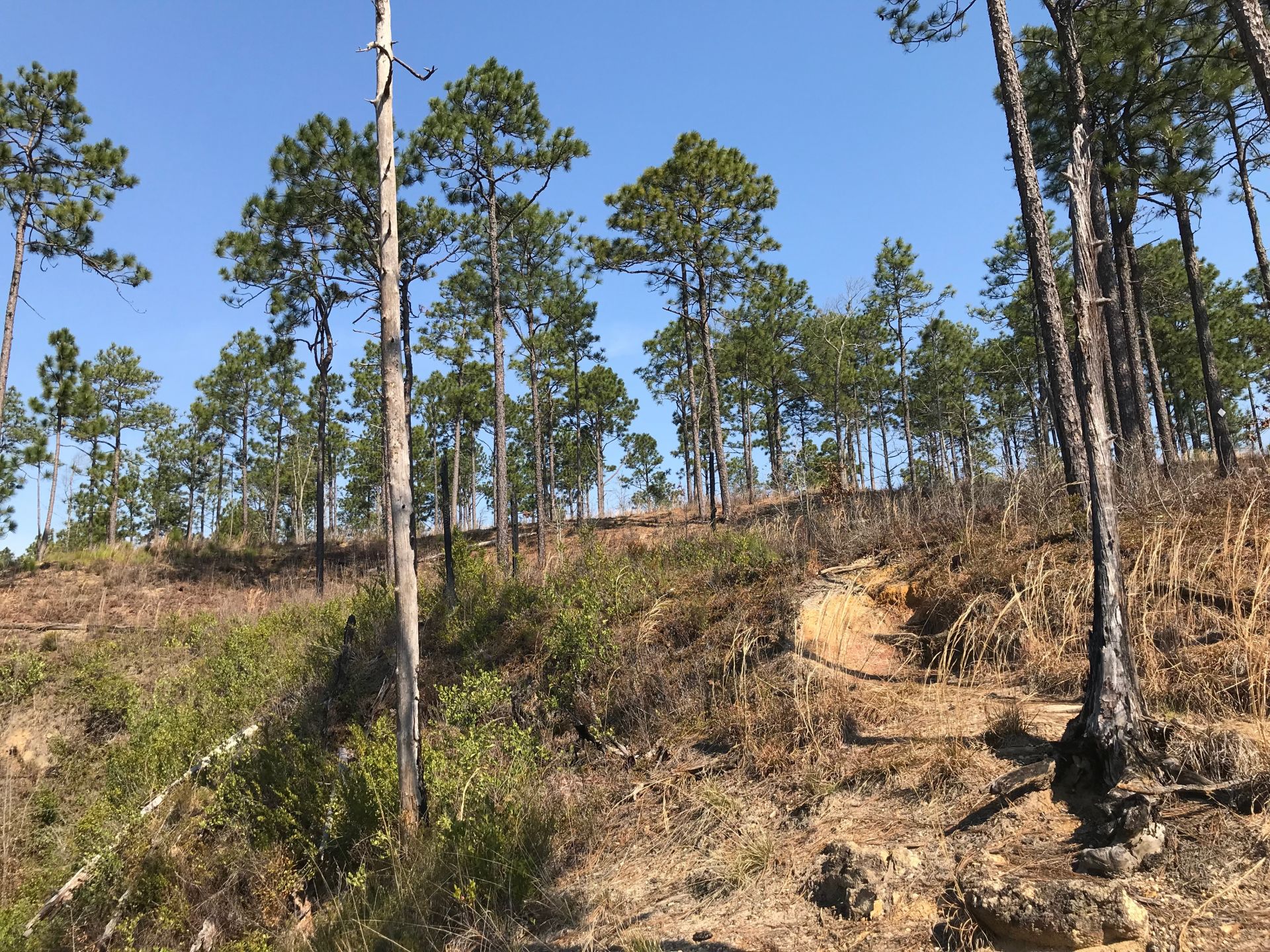
Longleaf pine savanna
I decided I should keep looking for those rosemary balds, so I found a way off of the plateau and descended back down into the Atlantic Coastal Plain. While carefully getting down, I decided to try flipping some rocks that were on the slope back down (this was an area where the descent wasn't nearly as steep). I managed to find some very interesting, orange Ponerines, which I have confirmed to be Hypoponera inexorata, yet another lifer species for me! Under some more rocks at the base of a shrub, I found a few Solenopsis thief ants and some larger, darker Solenopsis workers. I decided to collect those, as they didn't act like normal invicta and were also a lot darker than the ones I was used to seeing. Flipping over some more rocks did not reveal too many more workers, but I did find some more thief ants and another Hypoponera species, probably opacior. I moved up a bit to try my luck with some bigger rocks, and under the first one was a massive colony of Solenopsis with huge, big-headed majors. I had found Solenopsis geminata! They did still exist on the preserve! I collected a few workers, but seemed to forget that just because they're native didn't mean they weren't aggressive. I got too close and got stung a couple of times, though they did not leave the classic welt so characteristic of invicta stings, which I had read about in the aforementioned 2017 Mark Deyrup publication.
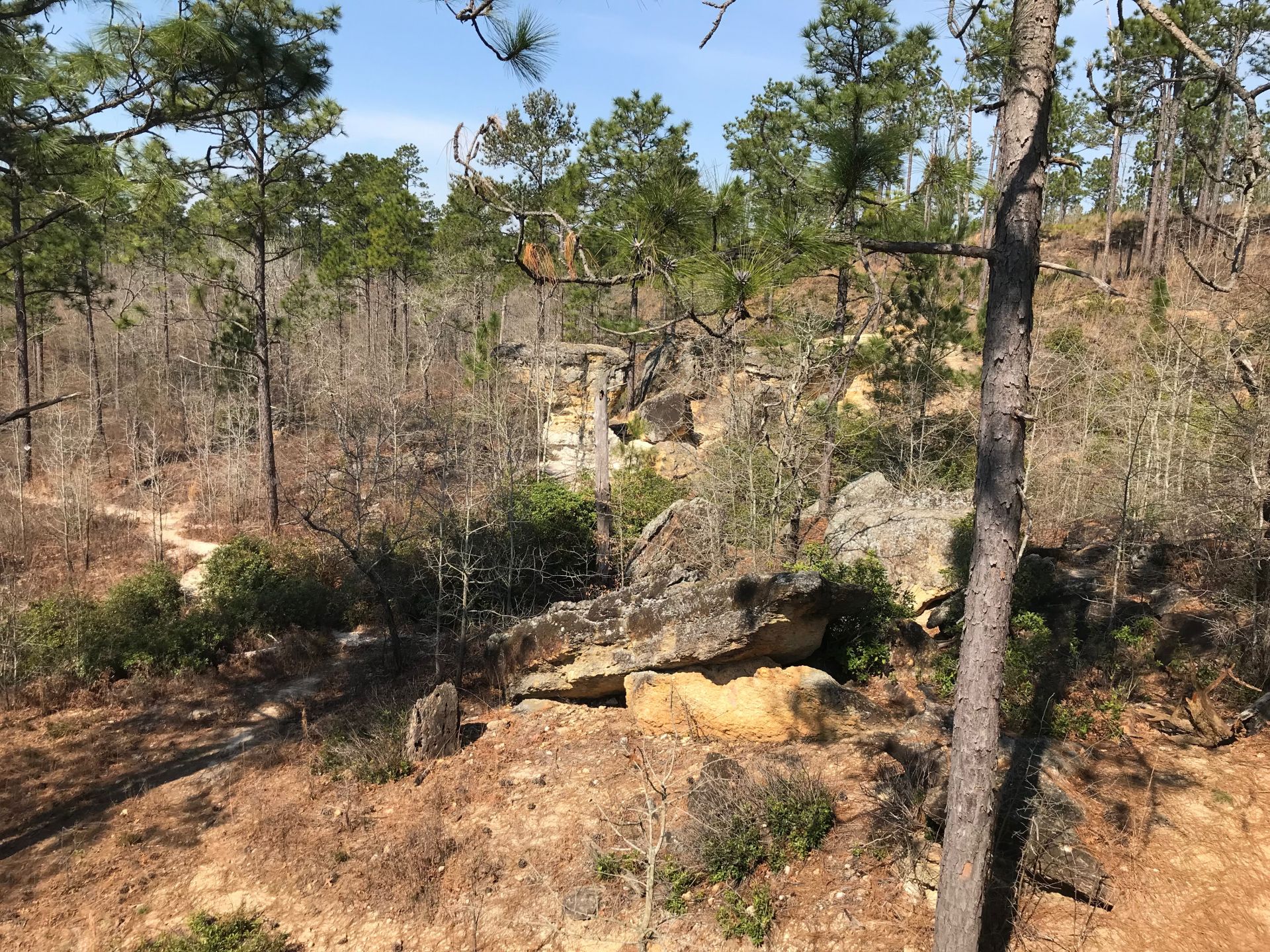
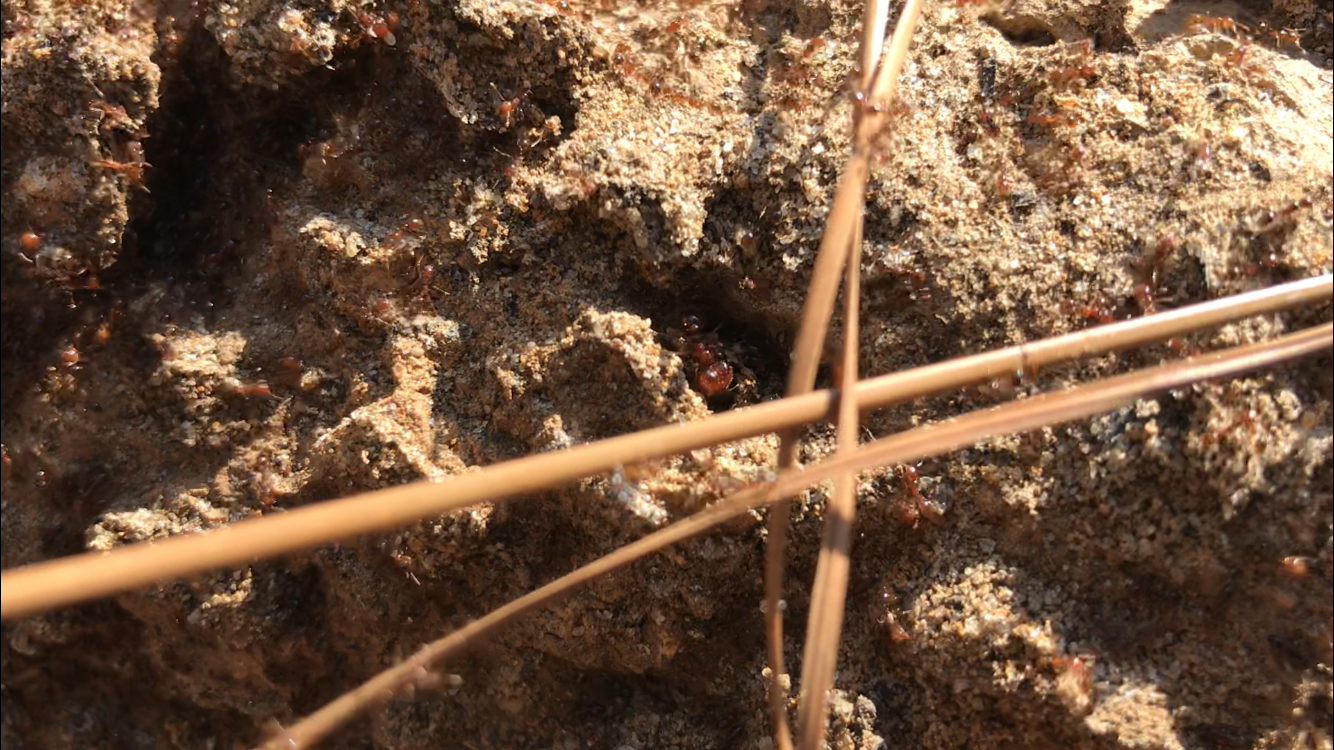
After bragging to TennesseeAnts that I had found the ants I was there for, and hearing him complain to me that I should collect the colony (it was several thousand workers strong), I continued on to find the Florida rosemary. After descending into the plain, I entered a more dense longleaf pine ecosystem, where I found even more colonies of geminata. I also witnessed my first ever flight of Prenolepis imparis, though they were just wrapping up. The ecosystem started to get more scrubby with lots of turkey oaks, although longleaf pines were still abundant here, though a bit more sparse. Most of the ants here were still just Prenolepis imparis, and invicta also started to become more common alongside the trails, misplacing geminata once again.
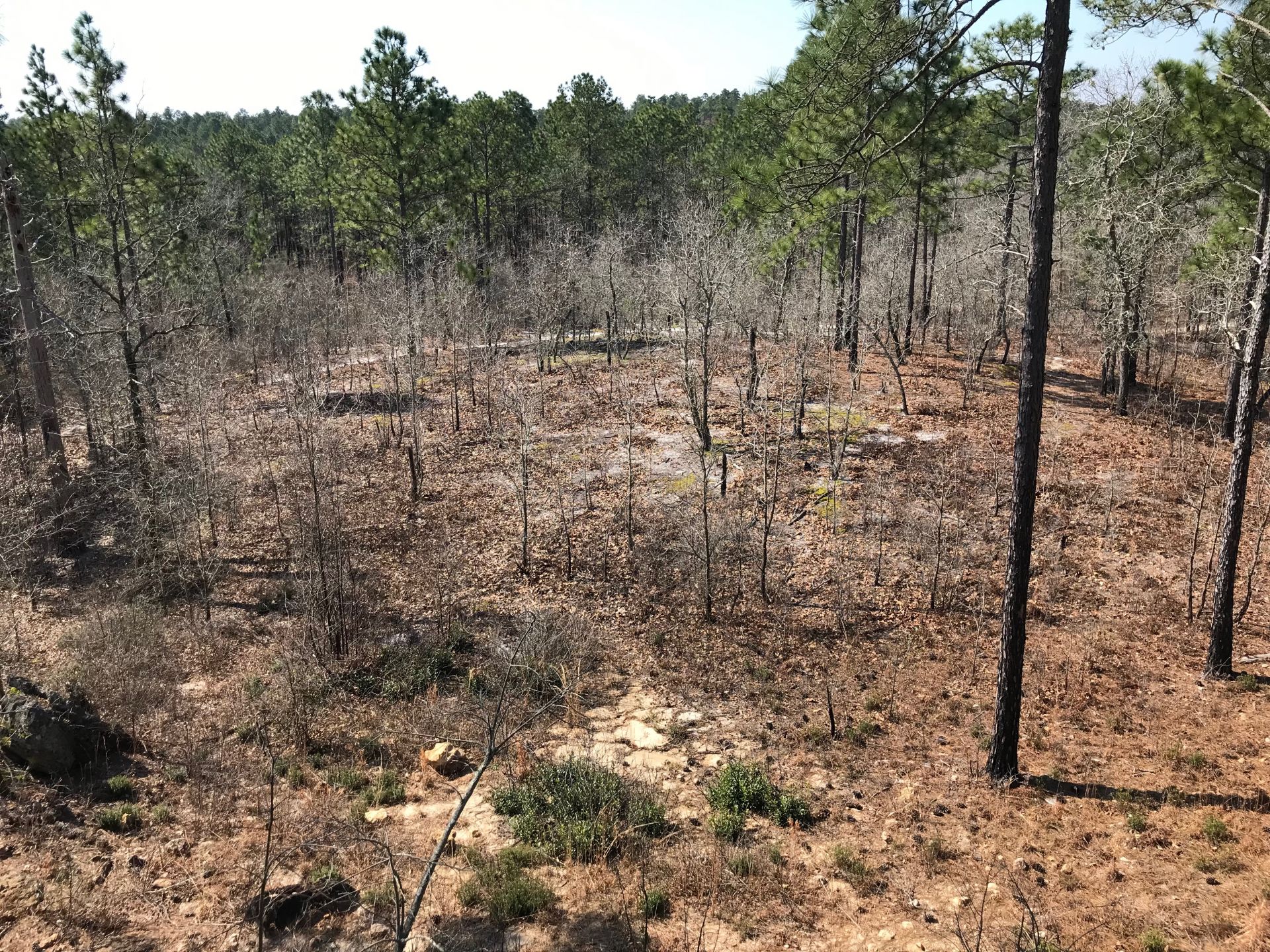
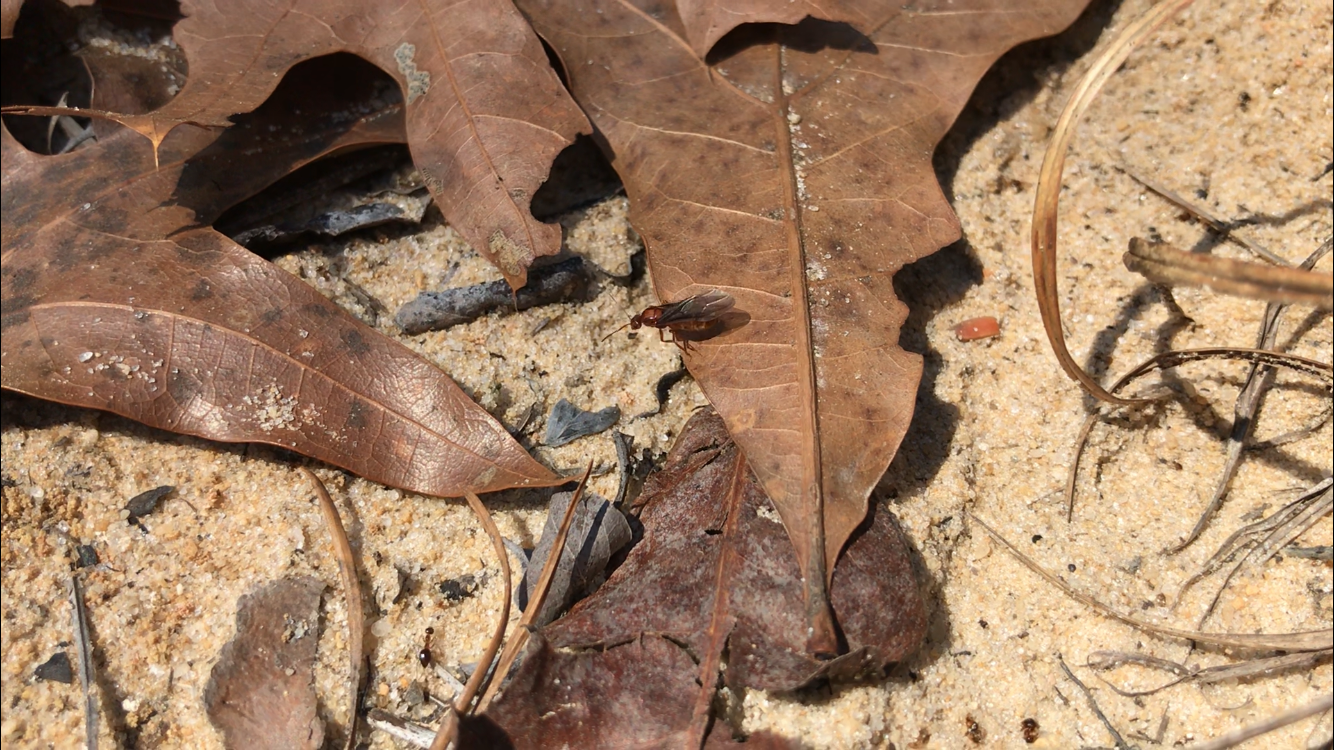
I finally came up to an area with mostly scrubby plants and oaks on one side of the trail and pines and broad-leaf evergreens on the other. On the side with the pines, I saw a bunch of old, dead bushes that had collapsed. I realized after seeing some live ones that they were Florida rosemary! I continued on and saw a whole bunch of them. However, looking around I saw no Pogonomyrmex badius, but instead Prenolepis imparis, Dorymyrmex bureni, Pheidole morrisii, and Forelius pruinosus. I'm still not sure why there were no Pogonomyrmex present in the area. Perhaps the sand was not deep enough. Maybe the sand wasn't the right kind. I've seen them nesting in yellowish sand before, but this sand was pure white. Whatever the reason, I was very surprised to not see badius in this particular area.

Florida scrub rosemary

 A bunch of rosemary, but not quite a rosemary bald
A bunch of rosemary, but not quite a rosemary bald
I decided to start heading back towards the longleaf pine savanna to see what else I could find around there. Along the way, I flipped over some rocks and logs and found Temnothorax pergandei, some Prenolepis imparis dealates, a Formica pallidefulva-group species, more Hypoponera inexorata, a Crematogaster species, and Pheidole crassicornis. Ascending back up to the savanna, I decided to follow the trail back towards Peachtree Rock, as I felt I had not done enough sampling in the mesic areas of the preserve. However, I still wanted to check out the longleaf pine savanna to see what was there before going back down into the ravine. There seemed to be less diversity up in the savanna, but I did see more Crematogaster and Forelius, along with a Solenopsis invicta queen. As the fall line drop became less of a cliff and more of a hill, I decided to go out onto its rocky surface to see what I could find. I managed to spot some very large Aphaenogaster workers. I thought I knew what they were, but I had to make sure. I grabbed one of the workers and closely examined the base of its antennal scapes. Large, thickened lobes were present, confirming my suspicions that they were, in fact, Aphaenogaster treatae, a fairly common but inconspicuous species in regions like this, inconspicuous due to their slow speed and cryptic nest entrances. I had never seen this species before, and was very excited to have seen yet another lifer!
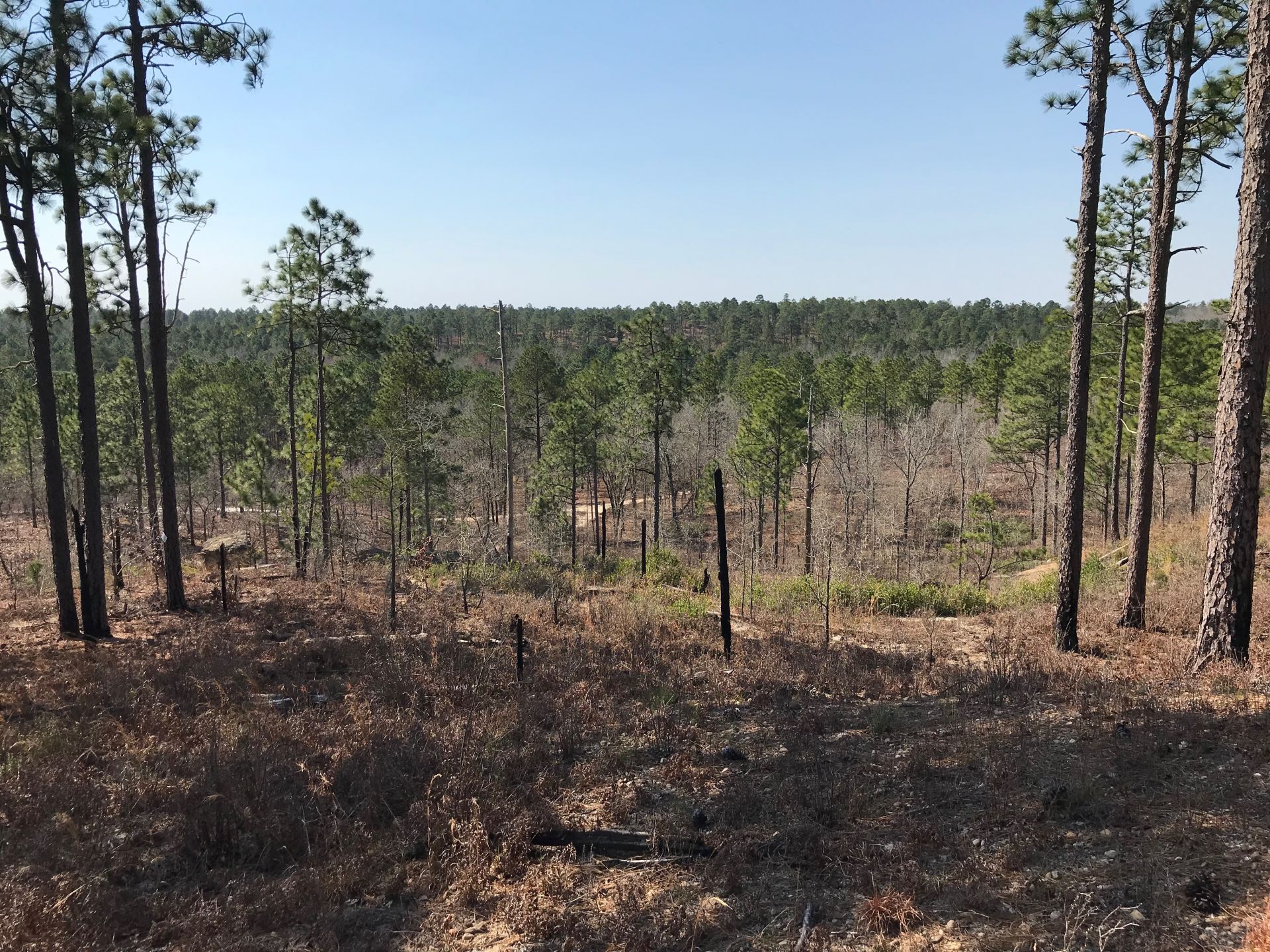
Back into the Piedmont we go!
I moved into a denser longleaf pine ecosystem where the sand was mostly covered up by pine needles. Other tree species started to pop up as well, including other pines. I saw one last scrubby habitat dominated by turkey oaks, and found another new species for the trip, Pheidole metallescens, which I had only seen once before. I also found some more Pheidole morrisii colonies. Going back onto the trail, I began to see more large sandstone structures and rocks. I also heard some rushing water, indicating I was near the waterfall. I flipped over some more rocks and logs and found some more imparis queens and a little slimy salamander, but nothing really new. I did want to see the creek the waterfall originated from, so I climbed up onto the sandstone walls and found the tiny, crystal-clear creek.

A cute little slimy salamander in my filthy hand
Looking out at Peachtree Rock, it was apparent that there were a lot more people had arrived, which kind of surprised me due to it being a work/school day for most people. I decided to follow the creek as it poured down into the ravine below, just to see where it led me. Unfortunately, the creek became increasingly difficult to follow due to it becoming less defined and also being shrouded in river cane and thorny vines. I saw some people on another trail near some more sandstone structures and decided to move up onto that trail. I looked around the sandstone for a bit and flipped over some rocks, where I found some Nylanderia, Aphaenogaster, and a Myrmecina americana queen. Following the trail up into a shortleaf pine forest and back towards the parking lot, I found a few more small sandstone structures, along with some promising rocks to flip. One of which, situated at the base of a tree, has nothing good under it, but I did see another large Aphaenogaster worker atop the rock carrying a dead Prenolepis imparis queen. This species I had seen before, though only once back in 2018 when I found a single forager in my yard. It was A. ashmeadi, very similar to treatae, but a bit darker in color with the lobes not extending as far up onto the scape and being thinner. I looked around for some more, and actually managed to locate the nest entrance. I collected a few more workers and kept moving on. It was at this point when I ran out of water.
As I was fast becoming dehydrated, I decided to head back to my truck. However, the lack of water and my increasing thirst did not keep me from collecting a few more ants, including Camponotus chromaiodes and nearcticus. When I finally did make it back to the truck with an hour to spare until I was to leave at 3:30, I was ready to leave right then and there to get something to drink! Luckily for me though, I found a full bottle of water in the back seat. After downing the whole thing, I was ready to go on for another hour. However, there wasn't time to go back out to the location of the Solenopsis geminata colonies where I wanted to explore more, so instead I decided to stay close to the parking lot. I didn't really find too much at first, just another Crematogaster species, some more Prenolepis queens, and a colony of Cyphomyrmex rimosus, which I wasn't too surprised to see, as they can really be found anywhere Solenopsis invicta is found.
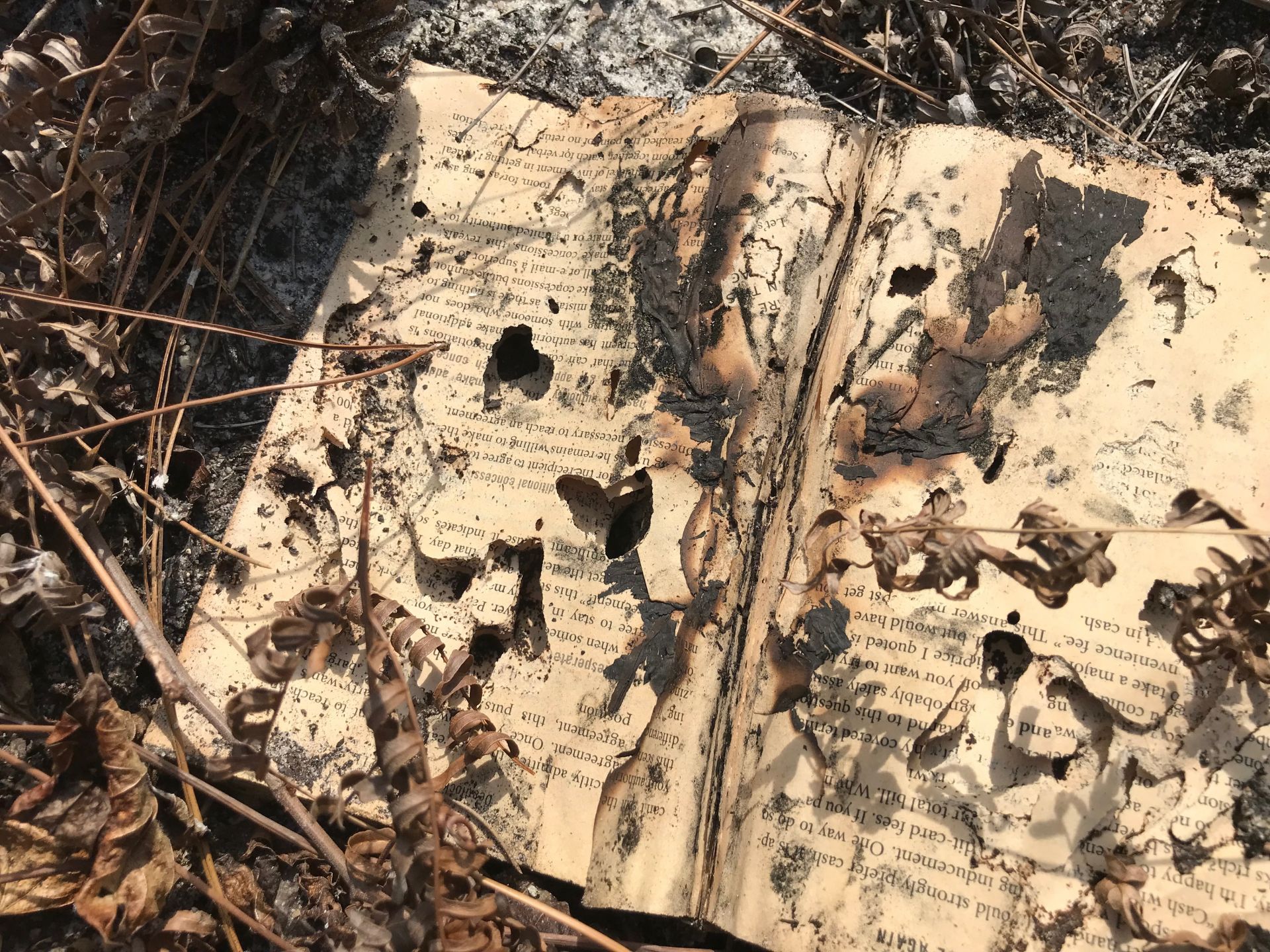
Having only 20 more minutes left at the preserve, I decided to flip over a few more logs laying in the sandy soil. I flipped over one that was near the base of a bush and was greeted with a large, seething mass of ants. At first, I had no idea what I was looking at. They were everywhere! Due to their numbers I originally thought Solenopsis, but even Solenopsis don't have colonies of that size. They sort of looked like Aphaenogaster to some degree, but their colonies never exceed more than a few thousand workers. Then it hit me, these were Neivamyrmex army ants! I was ecstatic, as not only had I never seen live Neivamyrmex before (I once found the remains of a N. opacithorax worker in Richland), but it also appeared to be a species I had never seen before! They were fairly small, smaller than I thought they would be at least, yellow and shiny. As I drooled over the colony and started to collect a few workers, I saw the queen! I grabbed her just to get a look at her and take some pictures, but then I saw another, and another, and another! They were polygynous! The only polygynous Doryline is N. carolinensis, so that's the ID I landed on. Due to there being so many queens, I was actually able to take a couple for my research. I was not going to bother with keeping the colony, as they're virtually impossible to keep alive outside of an advanced laboratory with plenty of resources for feeding and maintaining the colony. So, I took about 2000 workers and 4 queens (out of at least a dozen) back home with me so I could not only have a few specimens for my research, but also so that I could release most of them into my yard to do some studies on their ecological aspects.

The rare Neivamyrmex carolinensis!

Workers usher a queen back into the colony after their bivouac was disturbed
After I found the Neivamyrmex, I knew it was time to leave, but it was quite the trip! 7 hours of very light sampling just to get an idea of what was around that area yielded a grand total of 33 species! A list will be posted down below. Anyways, you'd better believe I'm gonna be headed back there to do some even more intensive sampling. Stay posted for specimen images coming in the new few weeks!
Total species number: 33
Asterisk(*) indicates introduced species
Bolded text indicates lifer species
Aphaenogaster ashmeadi
Aphaenogaster fulva-rudis-texana complex sp.
Aphaenogaster treatae
Brachymyrmex depilis
*Brachymyrmex patagonicus
*Brachyponera chinensis
Camponotus castaneus
Camponotus chromaiodes
Camponotus nearcticus
Crematogaster cf. laeviuscula
Crematogaster pinicola
Crematogaster sp.
*Cyphomyrmex rimosus
Dorymyrmex bureni
Forelius pruinosus
Formica pallidefulva-group sp.
Hypoponera inexorata
Hypoponera cf. opacior
Hypoponera sp.
Myrmecina americana
Neivamyrmex carolinensis
Nylanderia cf. faisonensis
Nylanderia sp.
Pheidole cf. crassicornis
Pheidole diversipilosa
Pheidole metallescens
Pheidole morrisii
Prenolepis imparis
Solenopsis geminata
*Solenopsis invicta
Solenopsis sp.
Temnothorax pergandei
Trachymyrmex septentrionalis
Edited by Ferox_Formicae, March 16 2021 - 11:05 AM.




















